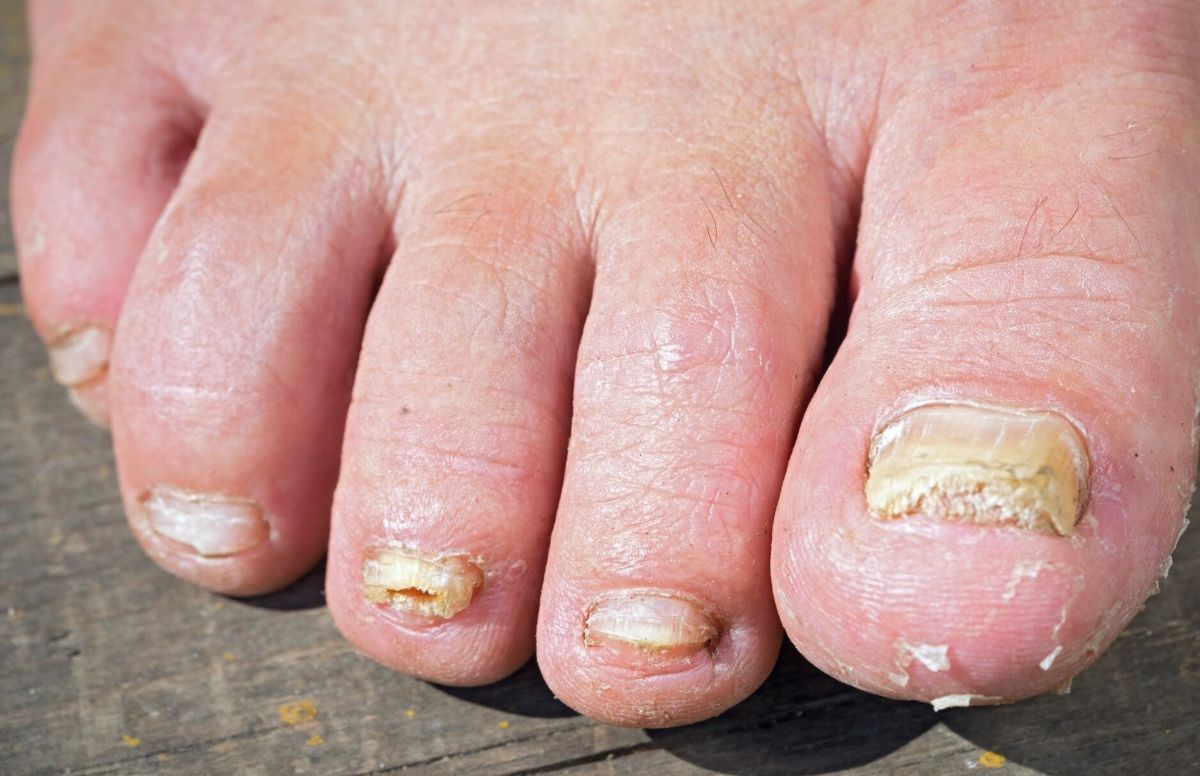Toenail fungus, also known as onychomycosis, is a common condition that occurs when a fungus infects the toenail. The infection can cause the toenail to become thick, discolored, and brittle, and it can also cause pain and discomfort.
There are several factors that can contribute to the development of toenail fungus, including:
- Poor hygiene: Fungal infections are more likely to occur in individuals who do not practice good hygiene, as fungi thrive in warm, moist environments.
- Sweating: Excessive sweating can create a moist environment that is favorable for the growth of fungi.
- Tight or closed-toe shoes: Wearing tight or closed-toe shoes for extended periods of time can create a warm, moist environment that is conducive to the growth of fungi.
- Age: Toenail fungus is more common in older individuals, as the nails become thicker and slower-growing as we age, which can make them more susceptible to fungal infections.
- Immunosuppression: Individuals who have compromised immune systems, such as those with HIV or AIDS, are more prone to developing toenail fungus.
- Medical conditions: Certain medical conditions, such as diabetes and peripheral artery disease, can also increase the risk of toenail fungus.
Toenail fungus is a common condition, affecting approximately 10% of the population. It is more common in men than in women, and it is also more common in individuals who have a family history of the condition.
Toenail fungus is typically treated by a board-certified dermatologist. The most common treatment options include:
- Antifungal medications: These can be taken orally or applied topically to the infected nail.
- Debridement: This involves removing the infected portion of the nail to allow the antifungal medication to reach the fungus more effectively.
- Laser treatment: This involves using a laser to kill the fungus that is causing the infection.
It is important to note that toenail fungus can be difficult to treat and may require long-term treatment to completely eliminate the infection. It is also important to practice good hygiene and to keep the feet dry to prevent the recurrence of toenail fungus.
In conclusion, toenail fungus is a common condition that is caused by a fungus infecting the toenail. It is typically treated by a board-certified dermatologist using antifungal medications, debridement, or laser treatment. It is important to practice good hygiene and keep the feet dry to prevent the recurrence of toenail fungus.
Note: This article is for educational purposes only and should not be construed as medical advice. If you are experiencing symptoms of toenail fungus or any other medical condition, it is important to seek care from a licensed healthcare professional. Do not attempt to self-diagnose or self-treat any medical condition.
 SCHEDULE NOW
SCHEDULE NOW
